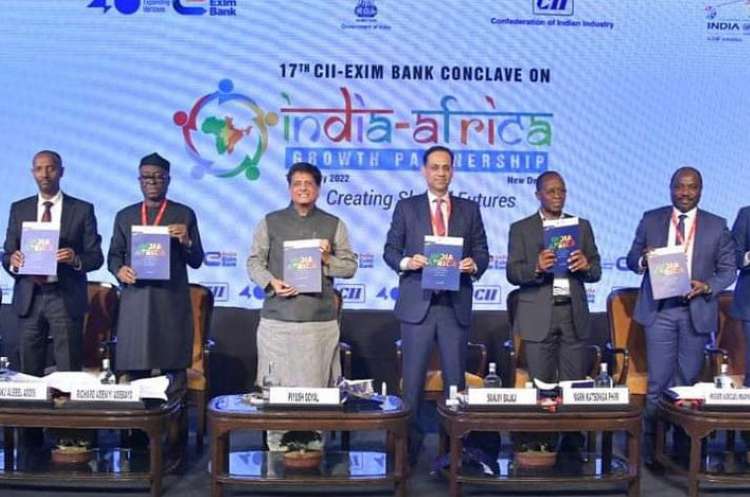
Indian diplomacy in Africa: After a 23-year hiatus, India and Uganda took a decisive step toward deepening economic ties during the Third Session of the India-Uganda Joint Trade Committee, held in New Delhi on March 25–26, 2025. Far from being a routine diplomatic event, the meeting signalled a renewed focus on tapping into the underutilised potential of bilateral trade and strategic cooperation.
The two nations identified priority sectors including coffee, cocoa, minerals, pulses, spices, and essential oils. Beyond commodities, they are also setting the stage for broader investments in electric vehicles, petrochemicals, MSME development, rare earth elements, pharmaceuticals, digital infrastructure, and health services. Talks are underway to sign memoranda of understanding covering traditional medicine, telemedicine, agriculture, and infrastructure.
On the surface, the meeting might appear to be a standard bureaucratic exercise. But look deeper, and a more strategic pattern begins to emerge—Indian diplomacy is quietly laying the foundation for an assertive but distinctly soft economic footprint, drawing inspiration from the aggressive playbook China has used to expand its global influence.
READ I Trump’s deep-sea mining order threatens global ocean governance
China’s predatory expansion model
China’s rise in global trade and investment has been characterised by a well-documented model of debt-trap diplomacy. Through large-scale loans to developing countries—often with opaque terms and unsustainable repayment expectations—China has gained leverage over key strategic assets.

Sri Lanka’s Hambantota Port, leased to China for 99 years after debt default, remains the most cited example. But similar stories abound: the Piraeus Port in Greece, Mombasa Port in Kenya, and infrastructure projects across Zambia, Laos, Uganda, and Montenegro reveal a consistent pattern of dependency masked as development.
These investments, while offering rapid infrastructure development, often prioritise Chinese contractors and labour, leaving host nations heavily indebted and economically constrained. For many nations in the Global South, China’s financing model filled the vacuum left by the stringent conditions of traditional lenders like the World Bank and IMF—but at a steep price.
Indian diplomacy: Cooperative, not coercive
In contrast, India is attempting to offer an alternative development paradigm—less coercive, more cooperative. Rather than binding nations into cycles of debt, India’s strategy appears to focus on long-term capacity building, sustainable growth, and mutual benefit.
This is not to say Indian diplomacy is not strategic. Its interventions, particularly in neighbouring countries and Africa, are part of a broader geopolitical realignment. During Sri Lanka’s 2022 financial crisis, India provided a lifeline worth $4 billion, including a $1 billion credit line to ease essential imports. In the Maldives, India pledged $500 million for the Greater Malé Connectivity Project, marking one of the largest infrastructure projects in the region. Even as political relations have since soured with some neighbours, the financial imprint remains.

India has also begun experimenting with currency diplomacy, as seen in its Rs 60 million rupee credit line to Mauritius in 2024—a modest but symbolic move toward internationalising the Indian rupee.
In Africa, Indian companies are increasingly prominent: Cipla and Bajaj in Kenya, Airtel in Nigeria, Tata in South Africa, and Bank of Baroda and Godrej in Uganda. These ventures stand in contrast to China’s state-driven, often extractive investments. India’s model emphasises entrepreneurship, skill development, and market integration over mere infrastructure ownership.
Global aspiration vs domestic reality
India’s growing engagement with Africa and other developing regions is undeniably a message to China: India is no longer a bystander in the race for global influence. But this expansion carries its own set of challenges.
Unlike China’s state-capitalist model with deep fiscal firepower, India’s global ambitions must be weighed against its domestic vulnerabilities—including high unemployment, widening inequality, infrastructure bottlenecks, and underinvestment in healthcare and education. For all its rhetoric of ethical diplomacy and development-led cooperation, India’s ability to sustain its external commitments depends heavily on domestic economic resilience.
There is also a risk that Indian diplomacy could evolve into a softer form of the same extractive tendencies it seeks to differentiate itself from. Already, policy analysts warn that without institutional safeguards and transparent project evaluations, India could repeat the very mistakes it critiques in China’s approach.
Influence rooted in partnership
Indian diplomacy—illustrated by its partnership with Uganda and similar efforts across the Global South—signals its desire to evolve from a regional power into a global architect of South–South cooperation. Its pitch is compelling: build together, grow together. But unless India strengthens its internal economic engine, it risks spreading itself too thin.
The real opportunity lies in synergy, not sacrifice. International partnerships can support domestic growth through improved market access, technology transfer, and diplomatic leverage. But only if the gains are systematically reinvested into India’s foundational sectors.
In the end, India is not trying to mimic China’s rise—it is attempting to redefine the path to global influence. Whether this model can succeed will depend not just on goodwill abroad, but on performance at home
Tanvi Patil is an undergraduate student of Economics at FLAME University, Pune. Rituparna Kaushik is an assistant professor of Economics at FLAME University.
